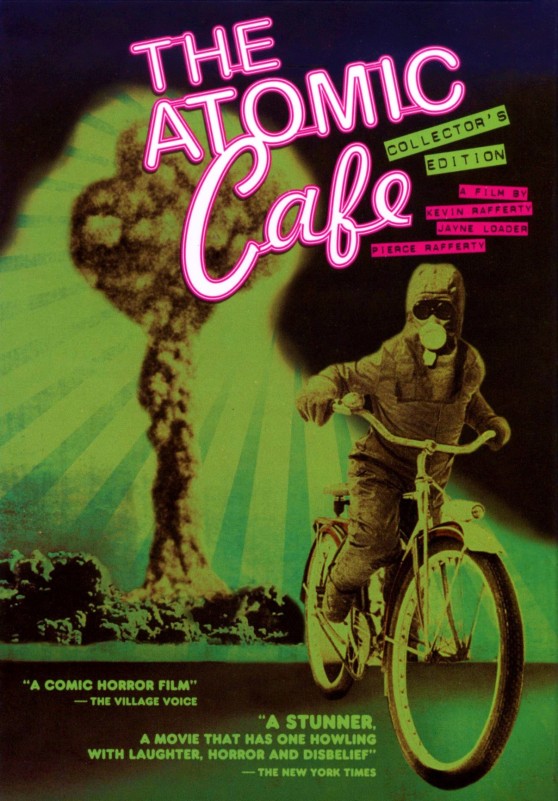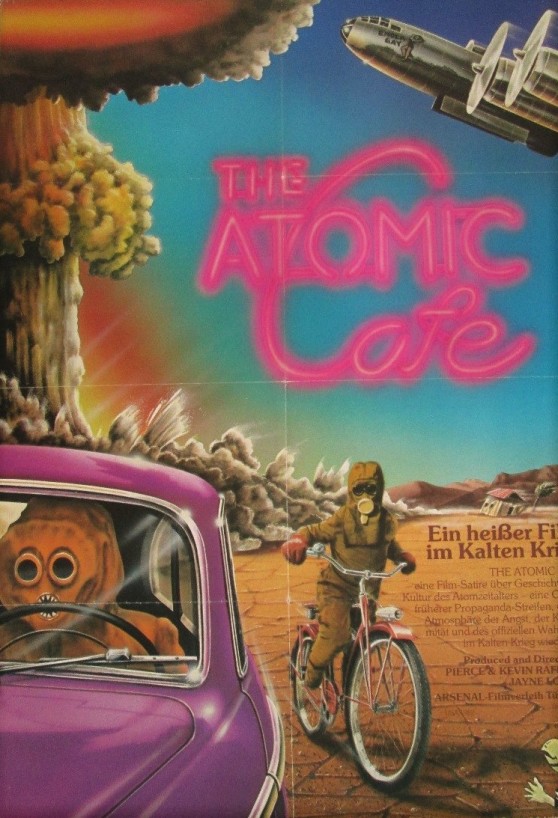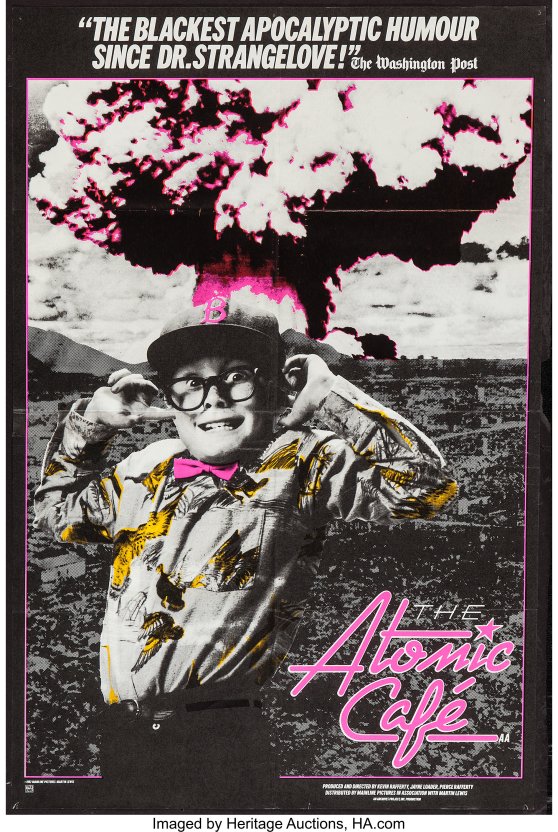timespace coordinates: 1940s, 1950s and early 1960s United States, the Marshall Islands
The Atomic Cafe is a 1982 American documentary film produced and directed by Jayne Loader, Kevin Rafferty and Pierce Rafferty. In 2016, the film was selected for preservation in the United States’ National Film Registry by the Library of Congress, being deemed “culturally, historically, or aesthetically significant”.

The film covers the beginnings of the era of nuclear warfare, created from a broad range of archival material from the 1940s, 1950s and early 1960s including newsreel clips, television news footage, U.S. government-produced films (including military training films), advertisements, television and radio programs. News footage reflected the prevailing understanding of the media and public.
Though the topic of atomic holocaust is a grave matter, The Atomic Cafe approaches it with black humor. Much of the humor derives from the modern audience’s reaction to the old training films, such as the Duck and Cover film shown in schools.
The Atomic Cafe was released at the height of nostalgia and cynicism in America. By 1982, Americans lost much of their faith in their government following the Vietnam War, the Watergate scandal, and the seemingly never-ending arms race with the Soviet Union. The Atomic Cafe reflects and reinforces this idea as it exposes how the atomic bomb’s dangers were downplayed and how the government used films to shape public opinion.

Bob Mielke, in “Rhetoric and Ideology in the Nuclear Test Documentary” (Film Quarterly) discusses the release of The Atomic Cafe: “This satire feature was released at the height of the nuclear freeze movement (which was in turn responding to the Reagan administration’s surreal handling of the arms race.)”

Patricia Aufderheide, in Documentary Film: A Very Short Introduction touches on the significance of The Atomic Cafe as a window into the past of government propaganda and disinformation during the years following the advent of the Atomic Bomb. “Propaganda, also known as disinformation, public diplomacy, and strategic communication, continues to be an important tool for governments. But stand-alone documentary is no longer an important part of public relations campaigns aimed at the general public.” (wiki)
Bikini Atoll
Because the site bears direct tangible evidence of the nuclear tests conducted there amid the paradoxical tropical location, UNESCO determined that the atoll symbolizes the dawn of the nuclear age and named it a World Heritage Site on 3 August 2010.
Bikini Atoll has conserved direct tangible evidence … conveying the power of … nuclear tests, i.e. the sunken ships sent to the bottom of the lagoon by the tests in 1946 and the gigantic Bravo crater. Equivalent to 7,000 times the force of the Hiroshima bomb, the tests had major consequences on the geology and natural environment of Bikini Atoll and on the health of those who were exposed to radiation. Through its history, the atoll symbolises the dawn of the nuclear age, despite its paradoxical image of peace and of earthly paradise.




